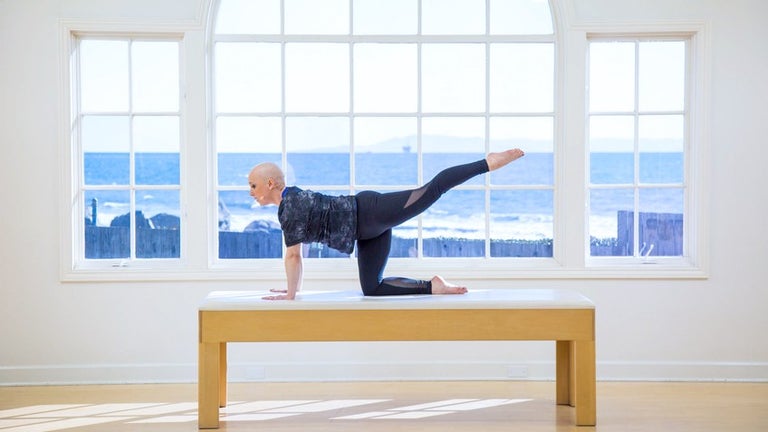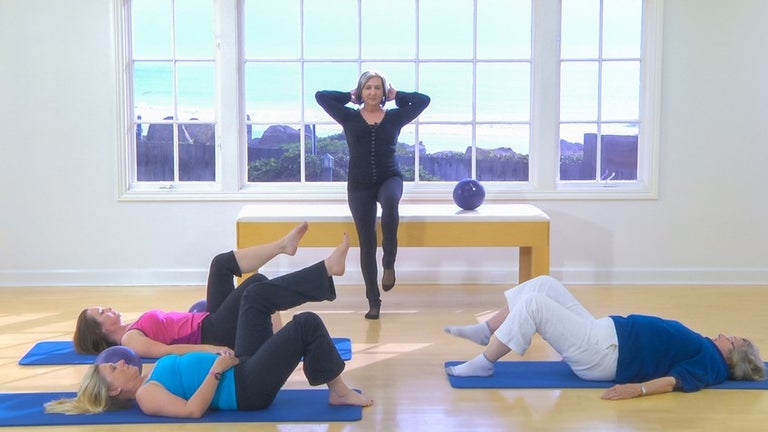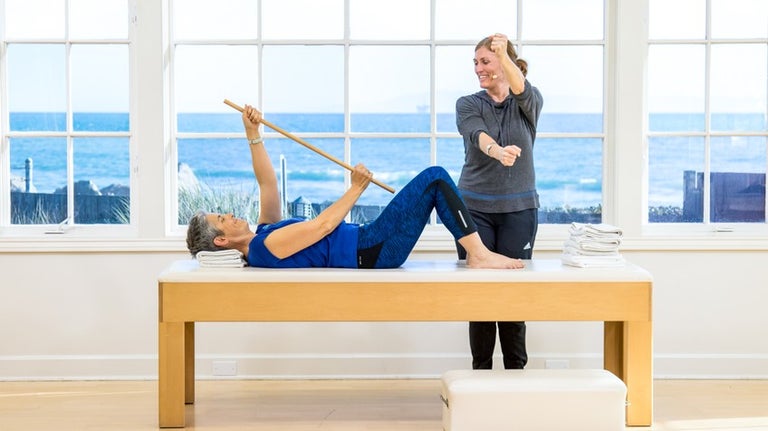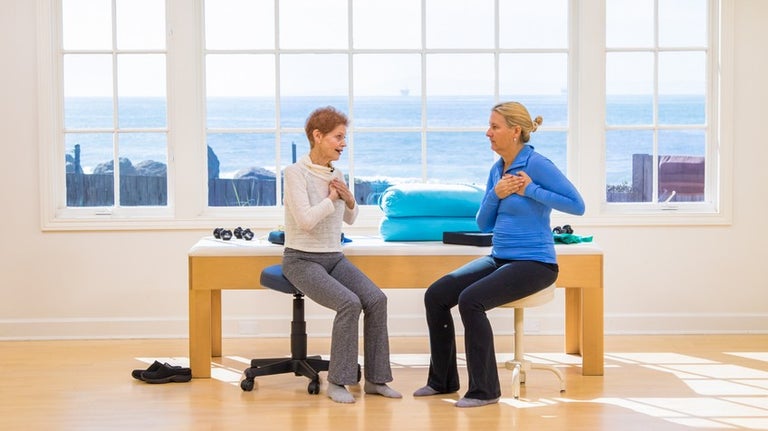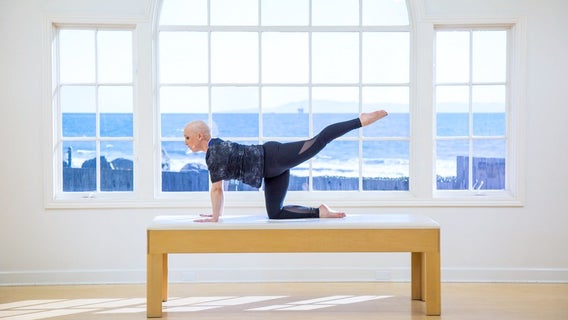Pilates For Breast Cancer Recovery
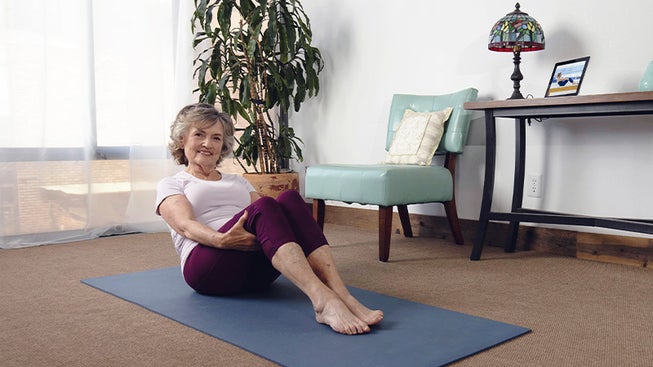
Pilates for Seniors: Breast Cancer Recovery
Breast cancer is the second most common form of cancer amongst women and is more prevalent after the age of 50. Though less common, men can be diagnosed with breast cancer too; generally at an older age.
Pilates can play an integral role in breast cancer recovery, not only for its physiological benefits, but for boosting self-esteem, confidence, and an overall sense of well-being.
Pilates is a natural choice for recovery. The exercises repattern musculature in an effective, but non-aggressive manner, resulting in increased strength, flexibility, and mobility.
Pilates Benefits for Breast Cancer Recovery
The reality is that breast cancer treatment can be taxing on the body physically, emotionally and spiritually. Referred to as ‘local treatment’, the treatment involves removing or destroying tissue around the cancerous area such as a mastectomy (the entire breast and possibly some lymph nodes) or lumpectomy (cancer tumor and some tissue and possibly some lymph nodes) or lymph node removal. ‘Systematic treatment’ concentrates on destroying cancer cells, sometimes through the entire body using chemotherapy, hormone therapy, or biological therapy.
Results or side effects of these treatments typically include tremendous fatigue, loss of physical strength in the upper body, muscle atrophy, pain, swelling, scar tissue, loss of mobility and weakness in normal day to day activities. Some medications or chemotherapy lead to premature onset of menopause in women or Osteoporosis.
Exercise, specifically Pilates, has been shown to improve shoulder mobility, quality of life, mood, and body image. Exercise plays a significant role in reducing the diseases’ recurrence. Certain Pilates exercises can be executed as early as a couple of days post-treatment or surgery. In the beginning stages of recovery, a Pilates program focuses on breathing and light movements. Pilates for breast cancer recovery can work in phases to safely progress from increased mobility and body awareness with breathwork to increasing strength through added resistance.
Overview On Safe Exercises
Pilates is a whole body modality that can target specific body parts whilst organizing the overall structure. This fundamental aspect is greatly beneficial for breast cancer recovery as cancer and treatments alter the upper extremity which affects the alignment of the entire body. An efficient exercise program for breast cancer recovery includes focused breathwork, shoulder mobility and strengthening exercises, core work and exercises for the pelvis.
Body intelligence is when one part of the body has suffered any form of trauma or alteration from an injury, surgery or invasive treatments, and the rest of the body adapts to these changes to sustain some form of function. Pilates starts to gradually and safely restore balance and optimal function to the body. Ideally, over time, a breast cancer survivor will have a decrease in pain and swelling, improved posture and balance, and increased range of motion and strength.
Safe Pilates exercises post-mastectomy include a concentrated breathing practice to mobilize and bring symmetry to the rib cage along with the release of the chest and upper back. An emphasis is placed on exercises that increase shoulder mobility and strength, which is often lost during treatment. Pilates core exercises establish a strong foundation for the body enhancing alignment, posture, and balance.
Featured Classes for Breast Cancer Recovery
Modifications for Breast Cancer Recovery
Pilates breast cancer recovery programs follow a strategy of phases from a solid foundation progressing to more strength and mobility for long term lasting results.
It’s important to follow the phases and remember quality over quantity for success. Exercises don’t have to be on the floor and can be executed sitting and/or standing. The key is remembering to work gently by refraining from force or pushing through. Performing fewer repetitions instead of moving until there is a pulling sensation gradually rehydrates scar tissue. When lying on the back keep the arms higher than the heart to encourage lymph drainage.
Overview on Exercises to Avoid
Exercise and most notably Pilates, as a part of breast cancer recovery has far-reaching positive benefits. Breast cancer recovery requires specialized programming thus, certain exercises and movements are best avoided.
The traditional and/or advanced Pilates repertoire is not suitable for individuals in breast cancer recovery, nor are strenuous and high-intensity workouts.
Avoid working in a wide range of motion or pushing to the point of feeling an uncomfortable pull. This can result in setbacks during the healing process. Refrain from lifting anything over 5lbs until 4-6 weeks post-surgery or being cleared by your doctor. A gradual buildup can occur through strategized programs taught by qualified instructors
Tips and Precautions
Physical activity should be an integral part of breast cancer recovery. Breast cancer diagnosis, treatment, and recovery can take a toll on the mind, body, and spirit. Exercise, specifically Pilates, has been shown to boost self-esteem, confidence, and a sense of independence.
Starting a new movement regime after dealing with breast cancer can be daunting. The important thing is to start. Start moving gently and you'll see progress in time. Having a strong support group whether it’s loved ones or speaking with other survivors is highly recommended.
Similar to the undertaking of any exercise program, consult with your doctor prior to starting and if you experience pain, tightness or swelling during exercise, call your doctor.
Join Our Online Community

- 15-Day Free Trial
- Unlimited Access to Thousands of Classes
- 95+ Pilates Programs and Challenges
- No Ads
- New Videos Weekly
- Available on All Your Favorite Devices
